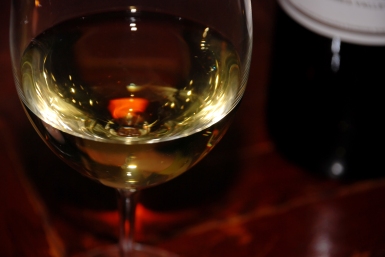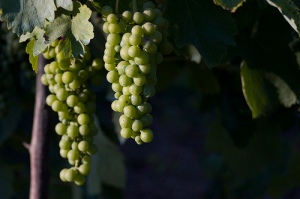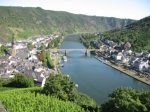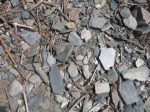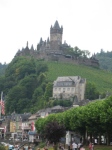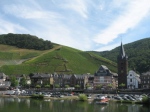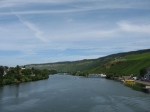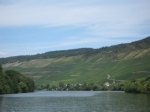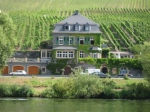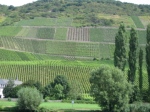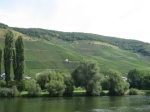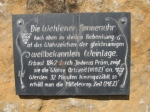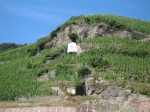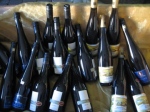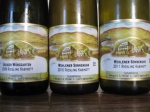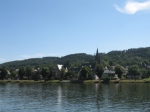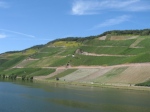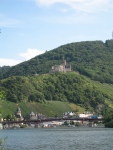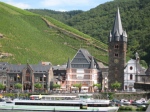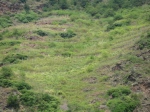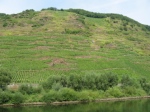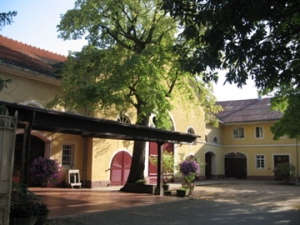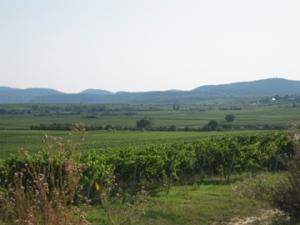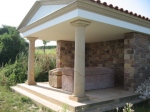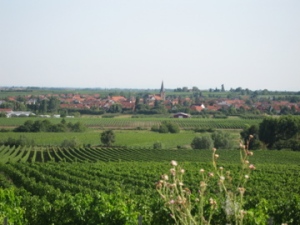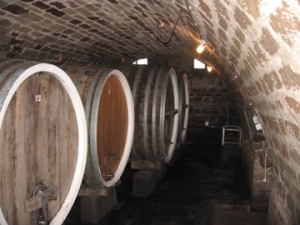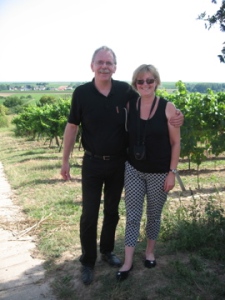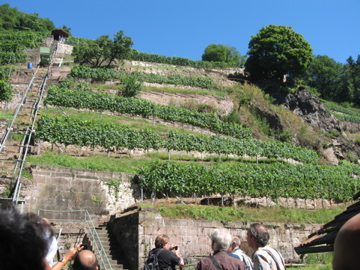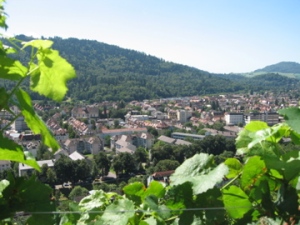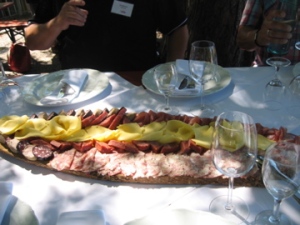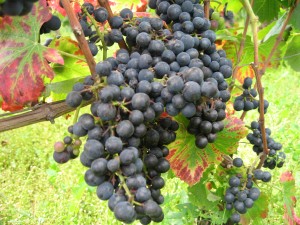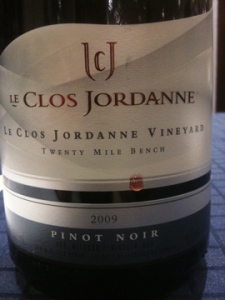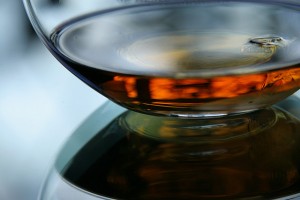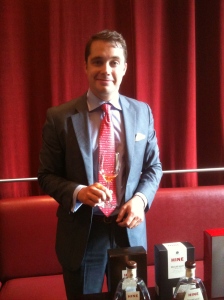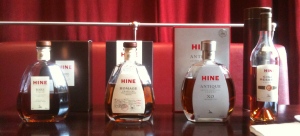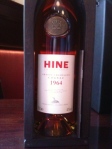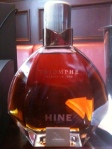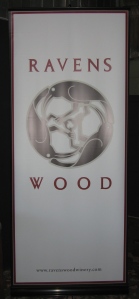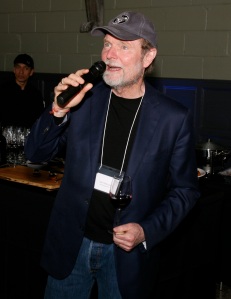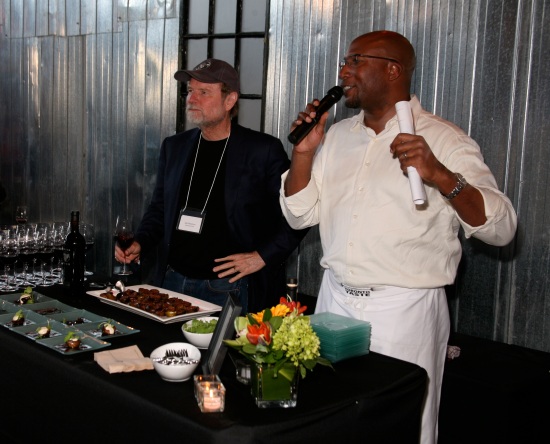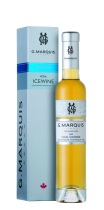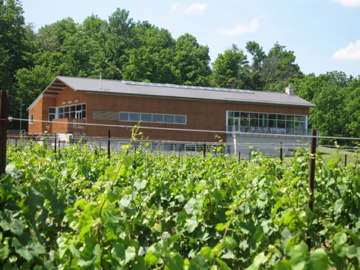 Perched high on the Beamsville Bench in Ontario’s Niagara Peninsula, Fielding Estate Winery’s lodge looks like something that could be sitting on prime lakefront property on Lake Muskoka – from the tall gleaming windows along one wall to the row of Muskoka chairs lining the deck. On a lazy, hazy summer day, you’d almost think you were there too, if not for the acres of vineyards surrounding the building and the glimmer of the Toronto skyline peaking at you through the trees from across Lake Ontario.
Perched high on the Beamsville Bench in Ontario’s Niagara Peninsula, Fielding Estate Winery’s lodge looks like something that could be sitting on prime lakefront property on Lake Muskoka – from the tall gleaming windows along one wall to the row of Muskoka chairs lining the deck. On a lazy, hazy summer day, you’d almost think you were there too, if not for the acres of vineyards surrounding the building and the glimmer of the Toronto skyline peaking at you through the trees from across Lake Ontario.
It was a beautiful, sunny day in mid-June when I drove along the winding driveway to the 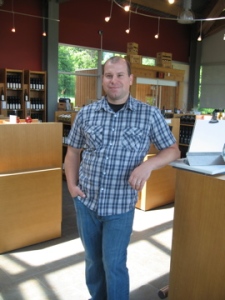 winery to meet Richie Roberts, Fielding’s head winemaker. I have enjoyed many Fielding Estate wines over the years, but I had never had the pleasure of meeting the winemaker before. Following its opening in 2005, Fielding’s reputation rose quickly, and after winning numerous wine awards it was named in the Top 10 Wineries in the 2009 Canadian Wine Awards, just 4 short years after opening. Riesling and Pinot Gris are their biggest sellers, but they also make top notch Gewurz, Viognier, and Chardonnay, as well as reds from Cabernet, Merlot, and Syrah.
winery to meet Richie Roberts, Fielding’s head winemaker. I have enjoyed many Fielding Estate wines over the years, but I had never had the pleasure of meeting the winemaker before. Following its opening in 2005, Fielding’s reputation rose quickly, and after winning numerous wine awards it was named in the Top 10 Wineries in the 2009 Canadian Wine Awards, just 4 short years after opening. Riesling and Pinot Gris are their biggest sellers, but they also make top notch Gewurz, Viognier, and Chardonnay, as well as reds from Cabernet, Merlot, and Syrah.
Richie, who joined the winery just after the 2007 harvest, is obviously passionate about his work and was happy to talk about the vineyards and his wines. I inquired about the brand new rows of vines just beyond the deck. Richie told me that they had just ripped out a patch of Merlot and replanted it with Riesling, a grape that fairs much better in the cooler climate high up on the bench. Apparently, the vineyard surrounding the winery is mostly Riesling. Another vineyard, not too far away, but in the appellation of Lincoln 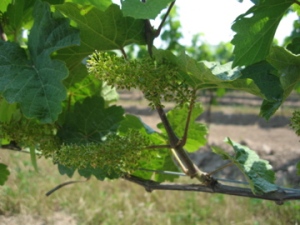 Lakeshore, grows other varieties, such as Pinot Gris, Merlot, and Chardonnay. They also buy grapes, especially Cabernet and Syrah, from vineyards in Niagara-on-the-Lake.
Lakeshore, grows other varieties, such as Pinot Gris, Merlot, and Chardonnay. They also buy grapes, especially Cabernet and Syrah, from vineyards in Niagara-on-the-Lake.
Right now, the vines are about 2 weeks ahead of normal and had already begun to flower when I visited. Richie was pleased with the progress so far this season, but admits that the weather is always a worry. Fielding’s vineyards are not irrigated, but the only time this was a real problem was in 2007 during the few weeks of very hot, dry weather. The clay soils do a good job of retaining moisture to keep the vines going.
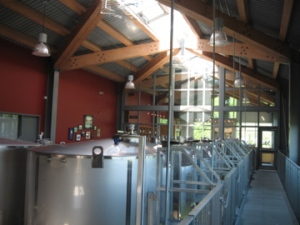 The winery and tasting room are located in an award-winning ‘lodge’ that was designed with landscape and agricultural influences in mind. The use of wood predominates in the building and I was very impressed with the one long gabled roof that runs from the tasting room right into the production space. This very long span is made possible by the beautiful exposed beams that support it. The production area has state-of-the-art equipment, including computerized tanks and a climate-controlled barrel room.
The winery and tasting room are located in an award-winning ‘lodge’ that was designed with landscape and agricultural influences in mind. The use of wood predominates in the building and I was very impressed with the one long gabled roof that runs from the tasting room right into the production space. This very long span is made possible by the beautiful exposed beams that support it. The production area has state-of-the-art equipment, including computerized tanks and a climate-controlled barrel room.
Tasting Notes:
2011 Rosé: A blend of Cabernet Franc, Pinot Noir, Merlot, and Syrah. Overflowing with red berries and a pretty floral note. Dry, refreshing, fun, and very quaffable! ($15.95)
2011 Chardonnay Musqué: Made from Clone 809. Pronounced aromas of ripe peach, apricot, melon, ginger, and a hint of cinnamon. On the palate it’s off-dry with balancing acidity. A nice summer wine! ($16.95)
2011 Estate Bottled Pinot Gris: About 15% was barrel fermented in old, neutral oak. Aromas of baked apple and pear, citrus, and melon. Round and juicy on the palate with a creamy texture and a pleasing fruity finish. ($21.95)
2011 Rock Pile Pinot Gris: This Pinot Gris has longer skin contact than the Estate Bottled and about 80% was fermented in large, old oak barrels. Tropical fruit, citrus and spice aromas dominate the nose. Rich and lush on the palate with cleansing acidity and a long length. Excellent. ($25.95)
2010 Estate Bottled Riesling: Fresh and delightful with aromas of lime, grapefruit, peach skin, and mineral. Crisp, clean and off-dry (24 g/l rs) with a mouthwatering finish. Only 10.5% alcohol. ($18.95)
2011 Lot No. 17 Riesling: Complex and aromatic, this wine shows lime, green apple, melon, dried mango, and mineral aromas. The good dose of sugar (37 g/l rs) is balanced by the searing acidity. Long length. Only 9% alcohol. ($25.95)
2010 Viognier: Mostly stainless steel with some barrel-fermented juice. Quite expressive with aromas of honeysuckle, tropical fruit, honey, and spice. Good concentration on the palate with an oily texture and a very spicy finish. ($25.95)
2010 Chardonnay: Barrel-fermented and aged 9 months in barrel (35% new French oak). Aromas of ripe pineapple, smoky baked apple, and butterscotch. A pleasant toastiness on the palate and a medium length. ($22.95)
2011 Gamay: The first Gamay to be produced by Fielding. 85% aged in neutral oak barrels. A vibrant ruby colour with aromas of fresh cherry, raspberry and other red berries with a touch of spice. Light enough to be served slightly chilled. A great summer BBQ wine! ($17.95)
2010 Cabernet Franc: This wine spent just over 1 year in barrel of which 30 to 35% was new oak. A combination of French, American, and Hungarian oak was used. Aromas of cedar, blueberry, roasted red pepper, and spice with a slight graphite pencil note. A good structure with smoky dark chocolate on the palate. Fair value. (21.95)
2007 Meritage: 65% Merlot, most of the rest is Cabernet Sauvignon with a small amount of Cabernet Franc. Brimming with spicy, ripe dark fruit – dark plum and black cherry – chocolate, and ground coffee. Big and full-bodied on the palate with firm velvetty tannins. I think it’s drinking well now, but it could still use a few years in the cellar. ($44.95)
2007 Chosen FEW: 45% Cabernet Sauvignon, 41% Merlot, and 14% Syrah. Each wine was aged independently in a combination of new and older oak barriques and ‘hogshead’s, before being carefully selected and blended together. A big, brooding wine with toasty caramel, smoky tobacco, dark plum, black cherry, cassis, and spice. The tannins are still very strong and could use a little more time to soften and become more approachable. Cellar 2 to 3 years before drinking – can easily last for 10 more years. ($59.95)
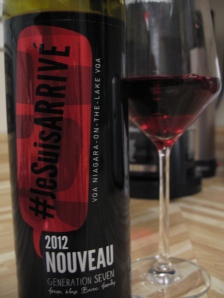 Generation Seven Gamay Nouveau 2012 VQA Niagara-on-the-Lake is the Bosc family’s (Chateau des Charmes) take on ‘nouveau’ wine, and I think it’s definitely worth snapping up a few bottles. After all, the holidays are almost here and this is a fun, celebratory wine to share with friends and family – it would also be a great accompaniment to Xmas turkey!
Generation Seven Gamay Nouveau 2012 VQA Niagara-on-the-Lake is the Bosc family’s (Chateau des Charmes) take on ‘nouveau’ wine, and I think it’s definitely worth snapping up a few bottles. After all, the holidays are almost here and this is a fun, celebratory wine to share with friends and family – it would also be a great accompaniment to Xmas turkey!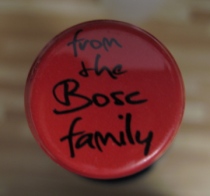 released at the LCBO, the winery, and the website, for only $11.95. The label conveniently sports the wine’s own hashtag, #JeSuisARRIVÉ, so you can share your thoughts with others in the Twitterverse about this yummy wine.
released at the LCBO, the winery, and the website, for only $11.95. The label conveniently sports the wine’s own hashtag, #JeSuisARRIVÉ, so you can share your thoughts with others in the Twitterverse about this yummy wine.